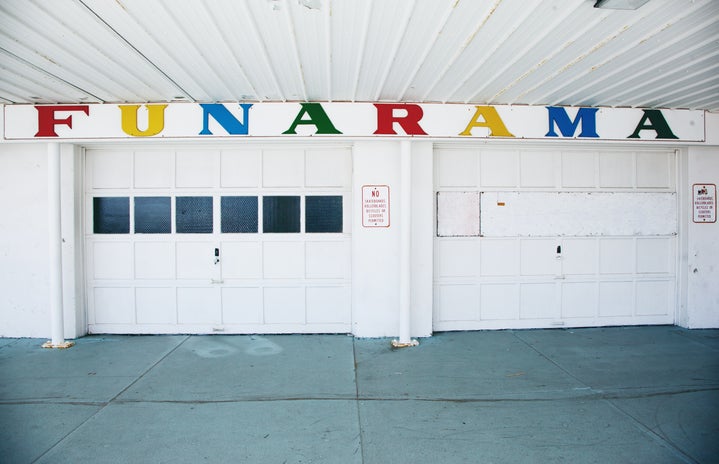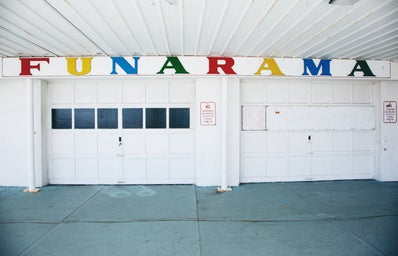Until last month, I had never been to Washington D.C.
This was always a talking point with my friends. No, I had never seen the White House or Capitol Hill in person. Yes, I know that Washington, D.C. is only a few hours away from New Jersey. These were the answers I always gave when they asked, usually with disbelief, why I had never been to our country’s capital.
Last semester during a First-Year Interest Group (FIG) Seminar, I learned about an opportunity at Rutgers called ‘Alternative Breaks,’ which as you could probably tell from the name was a different way for students to spend their winter or spring breaks. In the program, you would first learn about a particular social issue. I remember last year some issues of focus were immigration reform, environmental relief, and poverty. Then, you would travel to a site for a week to not only volunteer, but also to learn about the history and culture of how the issue has affected the site.
At first, I signed up because one of the sites for spring break this year was located in D.C. It seemed like an opportunity for me to travel, and also do good at the same time. The issues to be addressed at the D.C. site were two-fold: its goal was to educate students about tackling both hunger and homelessness in the city.
I thought I knew what I needed to about D.C. I read The New York Times all the time, so I have always prided myself on being updated with the current news going on with the Trump administration. I’m also a museum nerd, so I had a list of which ones I wanted to visit: the National Air and Space Museum, the Newseum, and the International Spy Museum, in particular.
It turns out that beneath the typical tourist sites, beneath the soapbox of politics, there were also a lot of deep-rooted issues in D.C. The city actually had one of the highest rates of homelessness in the entire country, which was due to a range of factors including gentrification, lack of affordable housing and the lack of support from the federal government.
Our first day in D.C., I found out that we wouldn’t be sleeping in a hotel, or even a motel. Instead, our group would be sleeping on mats in the basement of a church. Even though there were moments when I was frustrated with sharing only three bathroom stalls with more than thirty girls, by the end of the week, I would somehow be used to waking up before 7 a.m. to do my makeup and brush my teeth on time.
Every single day, we would go to a different volunteer site. The first day, my group went to a place called D.C. Central Kitchen, which takes food from various restaurants in the city and teaches unemployed adults how to “recycle” it into delicious meals for the hungry. That day I helped with the process, cutting chicken and stirring a huge bowl to make a stir fry.
The next day we went to Casa Ruby, a homeless shelter that assists those who are LGBTQ+. I learned that Casa Ruby was the only shelter of its kind in the entire city, despite the fact that there were hundreds of people who not only faced the challenge of being homeless but also faced the stigma surrounded with being queer. To make their shelter more welcoming, I helped to paint the walls so that it wasn’t just plain white, but instead a delicate light blue.
The following day remains one of my favorites of the entire week. We took the Subway for an hour to the Southeast quadrant of D.C. The city is split into four sections – Northwest, Northeast, Southwest and Southeast. The Northwest is largely regarded as the wealthiest district, and is home to many of the landmarks we are familiar with: Capitol Hill and the Smithsonian Museums, for example.
In contrast, the Southeast has fewer resources, which was why we went to the Anacostia River to learn about how the river served as a dividing line between the rich and poor in the city. On our side of the river, there were heaps of trash and discarded plastic bottles that only made the area worse for both tourism and the residents living there. Even though I spent around two hours picking up plastic bottles, I enjoyed the experience because it taught me to never look at rivers the same way again, and to be more wary of the pollution going on around the world.
Our final day, we went to A Wider Circle, which approached helping those who were homeless in a different way. It not only provides basic furniture, clothes and other items for people who need it, but also practices the concept of giving with dignity. In other words, while the common rhetoric was to just give people in poverty anything, even if it wasn’t the best quality, A Wider Circle aims to treat their customers with the utmost care and respect. I ended up sorting through the clothing, and sifting through which clothes were in good condition and suitable for customers to wear, and which ones had to go.
By the end of that short week, I was exhausted. Not only physically from waking up early every day and going to bed late, but also emotionally. This was not your typical vacation: I didn’t spend the entire week going to tourist sites, I didn’t eat out at many restaurants except for the final day, and I was learning every single day instead of letting my mind rest.
To be honest though, it was one of the best trips I have ever been on. It is my firm opinion that wherever you go, that place is not just about the glitz and glamour of the tourist sites and restaurants you see in brochures. Washington D.C. especially has many deep-rooted issues concerning homelessness and hunger that it tries to cover up, so I was grateful that I had the opportunity to meet actual residents of the city and hear their stories, as well as do my part in helping out at each of these sites.
I encourage everyone who plans on traveling in the future to look beyond being a tourist. Every city has its history, and it would be a disservice to travel somewhere and not take the time to understand its deeper roots. I also encourage those who travel to maybe volunteer or take some time, even if it’s just a few hours, to help out the city that you vacation in. You will not only learn more about a city than you ever could at a tourist site, but you will also be doing your part to make the world better.


